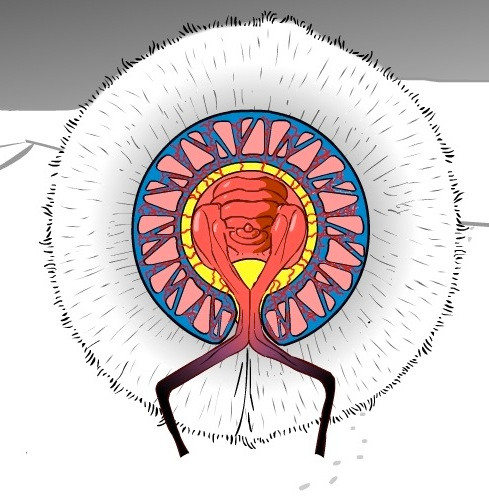HOME | DD
 Batterymaster — Athyrmatherian Anatomy: Connection Surfaces
Batterymaster — Athyrmatherian Anatomy: Connection Surfaces

#alien #xenobiology #speculativeevolution #speculativebiology #speculativezoology #athyrmagaia
Published: 2022-06-20 20:45:31 +0000 UTC; Views: 8063; Favourites: 57; Downloads: 5
Redirect to original
Description
As opposed to earth colonial organisms such as siphonophores or coral, there is absolutely no tissue fusion involved in the attachment of Athyrmatherian zooids. Instead, they use tight, secure coupling joints derived from the mandibles and telson (tail bone). The specializations are so extreme that the mandibles of the zooids (with the sole exception of those possessed by the cranial zooid) have entirely lost their function as mouthparts, causing the pharynx (oral opening) to migrate just below them. Aside from the actual coupling joints themselves, there are also a number of other adaptations that ensure each zooid of an Athyrmatherian's body is securely locked together. The front and back connection surfaces are mildly tessellated, with the front being convex and the back being concave to ensure that both surfaces maintain direct physical contact at all times. To strengthen the connection even further and protect the exposed soft tissues from drying out or getting infected, the lip and outer rim of each connection surface is lined with rows of "adhesive pores", which secrete a fibrous and extremely sticky mucus that rapidly dries when exposed to oxygen to act as an extremely strong airtight seal. When the segments need to detach, an additional set of "loosening pores" secretes an enzyme that quickly breaks down the mucus. Both of the connective surfaces have a set of vascularized and permeable tissues called "distribution membranes", which allow the zooids to directly transfer nutrients, oxygen, hormones and enzymes to one another via osmosis. This is especially important in regard to the consumption of food, as it allows for the nutrients that are drawn by one segment to be evenly shared with all the others. When the segments are detached, these membranes also double as sensory organs, with specialized cells around their edges allowing them to sense heat.Perhaps the most impressive of these adaptations would be the so-called "zip-lock" skeletal muscles. By themselves, these muscles truncate into flattened mats of collagen fiber that are visible on the connection surfaces. When the zooids attach, however, the collagenous flat ends of these muscles are able to "zip" together, forming hybridized skeletal muscles that connect between each zooid. The connections that form when these muscles zip is so strong that no differences between them and regular muscle have been found in terms of tensile strength. Even more surprisingly, these muscles can just as easily "unzip" when the zooids detach, which suggests that the zipping mechanism is "toggled" by neurological impulses. How such a thing evolved in the first place is uncertain, though it has been found that these muscle groups are exclusive to the composite stage.
Related content
Comments: 4

👍: 1 ⏩: 0

👍: 2 ⏩: 0

👍: 0 ⏩: 0

👍: 2 ⏩: 0

























